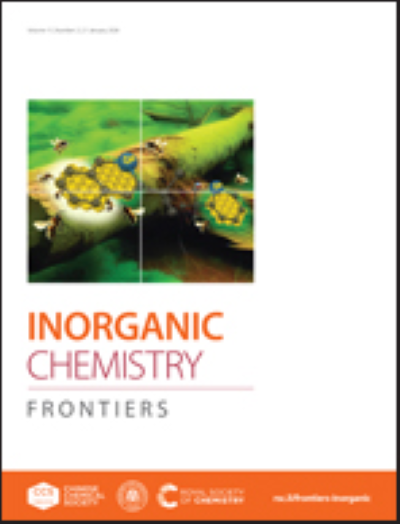Luminescent iridium(III) 2-cyanobenzothiazole complexes as site-specific labels to afford peptide-based phosphorogenic probes and hydrogels for enzyme activity sensing, cancer imaging and photodynamic therapy
IF 6.1
1区 化学
Q1 CHEMISTRY, INORGANIC & NUCLEAR
引用次数: 0
Abstract
Site-specific modification of biomolecules is crucial to the development of functional constructs for biomedical applications, offering precise control over the number and location of the functional handles incorporated. In this work, we designed, synthesised and characterised three luminescent cyclometallated iridium(III) complexes bearing a 2-cyanobenzothiazole (CBT) moiety [Ir(N^C)2(bpy-CBT)](PF6) (HN^C = 2-(2,4-difluorophenyl)pyridine (Hdfppy) (1), 2-phenylpyridine (Hppy) (2), methyl 2-phenyl-4-quinolinecarboxylate (Hpqe) (3); bpy-CBT = 4-(2-cyanobenzo[d]thiazol-6-yl)oxymethyl-4’-methyl-2,2’-bipyridine) as site-specific labels for N-terminal cysteine (NCys). These complexes displayed high reactivity and selectivity towards NCys, enabling facile peptide conjugation via the CBT–NCys condensation reaction. Complex 2 was used to prepare a peptide-based phosphorogenic probe 2-MMP-QSY7 for matrix metalloproteinase-2/9 (MMP-2/9) activity sensing and photocytotoxic applications. The conjugate showed substantial emission enhancement (I/Io = 9.8) in the presence of MMP-2/9, which allowed for the sensitive detection of MMP-2/9 activity in live cells and the facile differentiation of cancer and normal cells. The conjugate also exhibited controllable singlet oxygen generation and thereby photocytotoxicity in these cell lines. Additionally, complex 2 was utilised to fabricate two types of hydrogels: a non-biodegradable hydrogel Gel-1 as a cell culture scaffold integrated with MMP-2/9 sensing capability for examining the enzyme activity in 3D cell culture; and a biodegradable hydrogel Gel-2 as an MMP-2/9-sensitive carrier for selective delivery of luminescent iridium(III) complexes into cancer cells for imaging and photocytotoxic applications. The results of this work will contribute to the development of site-specific bioconjugation reagents with interesting photophysical properties, facilitating the construction of photofunctional peptide conjugates and biomaterials for biosensing, bioimaging, PDT and drug delivery applications.发光铱(III) 2-氰基苯并噻唑配合物作为位点特异性标记,可提供基于肽的磷原探针和水凝胶,用于酶活性传感、癌症成像和光动力疗法
本文章由计算机程序翻译,如有差异,请以英文原文为准。
求助全文
约1分钟内获得全文
求助全文
来源期刊

Inorganic Chemistry Frontiers
CHEMISTRY, INORGANIC & NUCLEAR-
CiteScore
10.40
自引率
7.10%
发文量
587
审稿时长
1.2 months
期刊介绍:
The international, high quality journal for interdisciplinary research between inorganic chemistry and related subjects
 求助内容:
求助内容: 应助结果提醒方式:
应助结果提醒方式:


